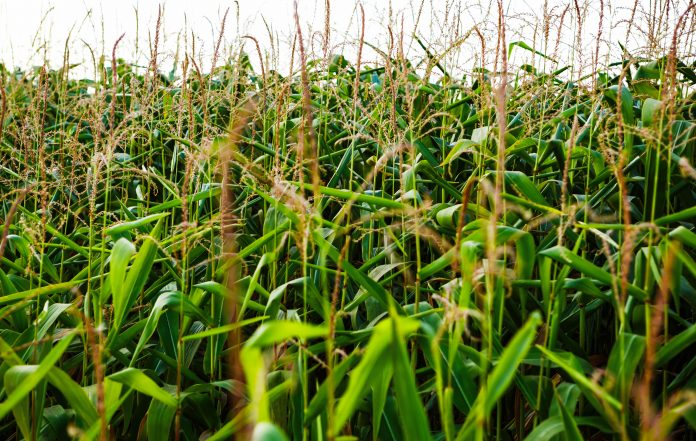L. Val Giddings, PhD, Senior Fellow, Information Technology and Innovation Foundation (ITIF), states that gene editing promises to make human industry sustainable*
The past decade has seen an explosion of media stories about new discoveries in biology and how those might lead to innovations that could help humanity deal with some of the mounting challenges we face. No discovery has been greeted with more excitement and coverage than gene editing. With gene editing, we now can tweak just about any organism in simple but fundamental ways to deliver a broad array of previously unimaginable changes. The technology is already being harnessed to do everything from curing cancers to improving the efficiency of photosynthesis in ways that promise to supplant petroleum chemistry and address the myriad challenges of climate change. The major limitation on what gene editing might accomplish would seem to be the power of human imagination.
One of the earliest applications of gene editing was aimed at reducing food waste. Scientists used gene editing to disable an enzyme responsible for browning in mushrooms (1), and in potatoes (2), improving their quality and extending their shelf life. Plant breeders are using it to improve flavour and disease resistance in strawberries, have developed bananas (3) resistant to disease, and a tomato (4) edited for improved nutrition is now on the market in Japan.
Gene editing also has many medical applications, where it has already been used to restore vision (5), treat intractable cancers (6), and perhaps cure HIV (7). Clinicians expect gene editing to revolutionise medical care.
Some believe gene editing – whether applied to climate change or for any other purpose – should be out of bounds because such human “meddling” with the “natural” world by modifying plants is dangerous, unpredictable, and “unnatural”. Arguments about what is “natural” have fuelled philosophical debate, at least since Plato, and the debate will never end. But it remains a fact that the techniques of genetic engineering and gene editing are things humans learned how to do by discovering them in nature, where they have been operating without regulatory supervision for eons. Any critique of them as “unnatural” must first overcome strong contradictory testimony from nature itself.
Safety concerns
Some are of the opinion that we don’t know enough about these techniques to be confident they can be safely used, that there may be hazards and risks with which we are unfamiliar that could usher in unacceptable harm. Thousands of years of plant breeding, and three decades of global experience with crops and foods derived through biotechnology, refute such claims. Despite 11 studies in the past four decades, the U.S. National Academies of Science has failed to detect even a hint of novel hazards associated with genetic engineering or gene editing – and hundreds of other authoritative bodies (8) around the world have reached similar findings. Indeed, the only safety differential between products of genetic engineering so far discovered and those of older breeding methods indicate the former to be safer than the latter (9).
Biology applied to food production
Climate and clean energy innovation have been focused on physical and chemical solutions, but it is now time for biology to play a bigger role in solving one of humanity’s greatest challenges. Innovations based on biological knowledge and techniques have had an extraordinary impact on food production over the past century. The eightfold increase in corn yields is but one example. Similar gains have been made in soy, cotton, oilseeds, and fruits and vegetables – and in livestock management as well. These gains have been due largely to improved agricultural practices in weed control, pest and disease management, and irrigation, but much has been attributable to genetic improvements.
While it is difficult – perhaps impossible – quantitatively to estimate the extent to which gene-edited solutions can contribute to climate change mitigation, it is clear the potential is considerable. This genetic toolkit is so powerful, its applications so widespread, and its development so rapid that we simply cannot yet conceive all the ways it will be used in the coming decades. Based on the dramatic increases in agricultural productivity that technological advances have delivered over the past century, it is not unreasonable to anticipate that gene editing could lead to a 50% improvement in agricultural productivity by 2050. That would translate into a commensurate reduction in agricultural GHG emissions while at the same time contributing to significant increases in carbon sequestration in other sectors. With sufficient support for and coordination of R&D, scientifically defensible regulatory policies, and incentives for private-sector deployment, there is ample basis to expect a significant positive contribution from gene-edited solutions to the challenges of climate change.
*This paper is drawn from “Gene Editing for the Climate: Biological Solutions for Curbing Greenhouse Emissions” by L. Val Giddings, PhD, Robert Rozansky, and David M. Hart,Information Technology and Innovation Foundation, September, 2020, https://itif.org/publications/ 2020/09/14/gene-editing-climate-biological-solutions-curbing-greenhouse -emissions.
References:
- (1) Modified Mushroom “Escapes Regulation” | ITIF
- (2) Potatoes at the Center of New Gene-Editing Procedures – The Food Institute
- (3) African scientists used CRISPR to edit bananas and make them more resilient to disease (zmescience.com)
- (4) Tomato is first CRISPR-edited food to go on sale in the world | New Scientist
- (5) CRISPR Gene-Editing Experiment Partly Restores Vision In Legally Blind Patients: Shots – Health NewsL NPR
- (6) CRISPR Technique Effectively Destroys Metastatic Cancer Cells in Living Animal (genengnews.com)
- (7) CRISPR gene editing to cure HIV? It’s now in clinical trials -Genetic Literacy Project
- (8) More than 280 scientific and technical institutions support the safety of GM crops » Sí Quiero Transgênicos (http://www.siquierotransgenicos.cl/)
-
G.P. Munkvold & R.L. Hellmich (1999) Comparison of fumonisin concentrations in kernels of transgenic Bt maize hybrids and nontransgenic hybrids. Plant Disease 83(2):130–138. https://apsjournals.apsnet.org/doi/abs/10.1094/PDIS.1999.83.2.130











